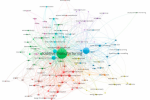
Aviation Industry Faces Hurdles in 3D Printing Adoption, New Literature Review Shows
3dprintingindustry.com
A systematic review of 29 open-access publications has mapped the current status of additive manufacturing in aviation, identifying key benefits and obstacles to broader adoption. Researchers Jorge Oliveira and Pedro Espadinha-Cruz, based at Universidade NOVA de Lisboa, conducted the review using a Scopus-based search. Their work was presented at the 6th International Conference on Industry 4.0 and Smart Manufacturing and published in Procedia Computer Science.The review emphasizes ongoing barriers in certification, cost, and repeatability, while also highlighting progress in areas such as lightweight structural parts, decentralized supply chains, and sustainable manufacturing. It consolidates findings from peer-reviewed literature published between 2012 and 2024 and presents a content and bibliometric analysis that aims to guide future research priorities.Annual scientific production Graphic. Image via Oliveira & Espadinha-Cruz.Research methodology and article selection criteriaCertification and repeatability remain critical barriers to implementation in regulated sectors like aviation. Several articles in the review identify the absence of unified standards as a major constraint on the adoption of 3D printed components in flight-critical systems. One study stresses the importance of rigorous benchmark measurements to evaluate simulation and test data for metal components. Others argue that current validation processes are poorly suited to AMs layer-by-layer fabrication methods.Material quality concerns also recur across the dataset. Researchers report issues with porosity, surface finish, and residual stress, particularly in parts manufactured using powder bed fusion. Aluminum alloys are frequently used due to their favorable strength-to-weight ratio but often require post-processing to meet aviation standards. Variability in build parameters adds complexity to both testing and qualification.Historical development of additive technologies and classification standardsModern 3D printing technologies emerged in the early 1980s, beginning with UV-curable resin systems by Hideo Kodama. Charles Hulls stereolithography led to the commercialization of 3D printers in 1987. Selective laser sintering and fused deposition modeling followed shortly after. The review categorizes current technologies using ISO/ASTM standards: powder bed fusion, directed energy deposition, binder jetting, VAT photopolymerization, and material extrusion, among others.Hybrid systems, combining CNC milling with directed energy processes, have also gained ground. These technologies support a range of materials including metals, polymers, and ceramics, allowing their integration into various aviation components. Metal processes dominate the reviewed literature due to their relevance for structural parts.Distribution of key research topics across reviewed articles. Image via Oliveira & Espadinha-Cruz.Cost and sustainability assessments yield mixed resultsSeveral studies analyze the economic feasibility of AM for aviation, with conflicting conclusions. One reports cost savings of up to 33.2% in specific aeronautical applications, while others cite increased expenses due to machine acquisition, material costs, and post-processing. Most papers agree that AM is currently best suited for low-volume, high-complexity components where tooling costs for traditional methods would be prohibitive.Environmental benefits are more consistent. Research points to reduced material waste, fewer machining steps, and lower buy-to-fly ratios. One article finds a 60% reduction in material consumption in metal AM applications. Still, the review notes that such savings depend on part geometry and lifecycle design, and may be offset by energy-intensive post-processing.Spare parts and decentralized production as primary aviation use casesMultiple studies discuss the implications of AM for spare parts logistics and aircraft maintenance. Digital inventories and distributed production could lower lead times and eliminate stockpiling, especially for legacy aircraft with discontinued parts. Simulation models show that decentralized manufacturing can reduce transportation needs and improve aircraft availability.Topology optimization and part consolidation are central to these outcomes. Additive methods allow engineers to redesign components for weight reduction and structural efficiency. This supports ongoing efforts in commercial aviation to improve fuel efficiency and reduce emissions. However, success in these areas depends on workforce skills, software maturity, and access to real-time data for maintenance workflows.Network visualization of keyword co-occurrences in the reviewed literature. Image via Oliveira & Espadinha-Cruz.Future research directions target simulation, standards, and digital integrationThe review identifies several underexplored areas where research is needed to unlock broader AM adoption. These include development of process simulation tools, qualification protocols, and surface treatment methods for metals. There is also emphasis on the need for specialized training to equip engineers with design-for-AM skills, as well as on the integration of AI and IoT systems to support automated monitoring and predictive maintenance.While regulatory agencies like the European Union Aviation Safety Agency (EASA) and the Federal Aviation Administration (FAA) have held workshops on AM certification, formal standards remain in early stages. ISO/TC 261, the technical committee on additive manufacturing, is developing documentation, but harmonization across global jurisdictions is incomplete.Temporal evolution of keyword focus in aviation AM literature Image via Oliveira & Espadinha-Cruz.Additive manufacturing in aviation shows clear technical potential, but its role remains limited without frameworks that assure repeatability, traceability, and economic scalability.Ready to discover who won the 2024 3D Printing Industry Awards? Subscribe to the 3D Printing Industry newsletter to stay updated with the latest news and insights.Featured image shows network visualization of keyword co-occurrences in the reviewed literature. Image via Oliveira & Espadinha-Cruz.Anyer Tenorio LaraAnyer Tenorio Lara is an emerging tech journalist passionate about uncovering the latest advances in technology and innovation. With a sharp eye for detail and a talent for storytelling, Anyer has quickly made a name for himself in the tech community. Anyer's articles aim to make complex subjects accessible and engaging for a broad audience. In addition to his writing, Anyer enjoys participating in industry events and discussions, eager to learn and share knowledge in the dynamic world of technology.
0 Commenti
·0 condivisioni
·38 Views


